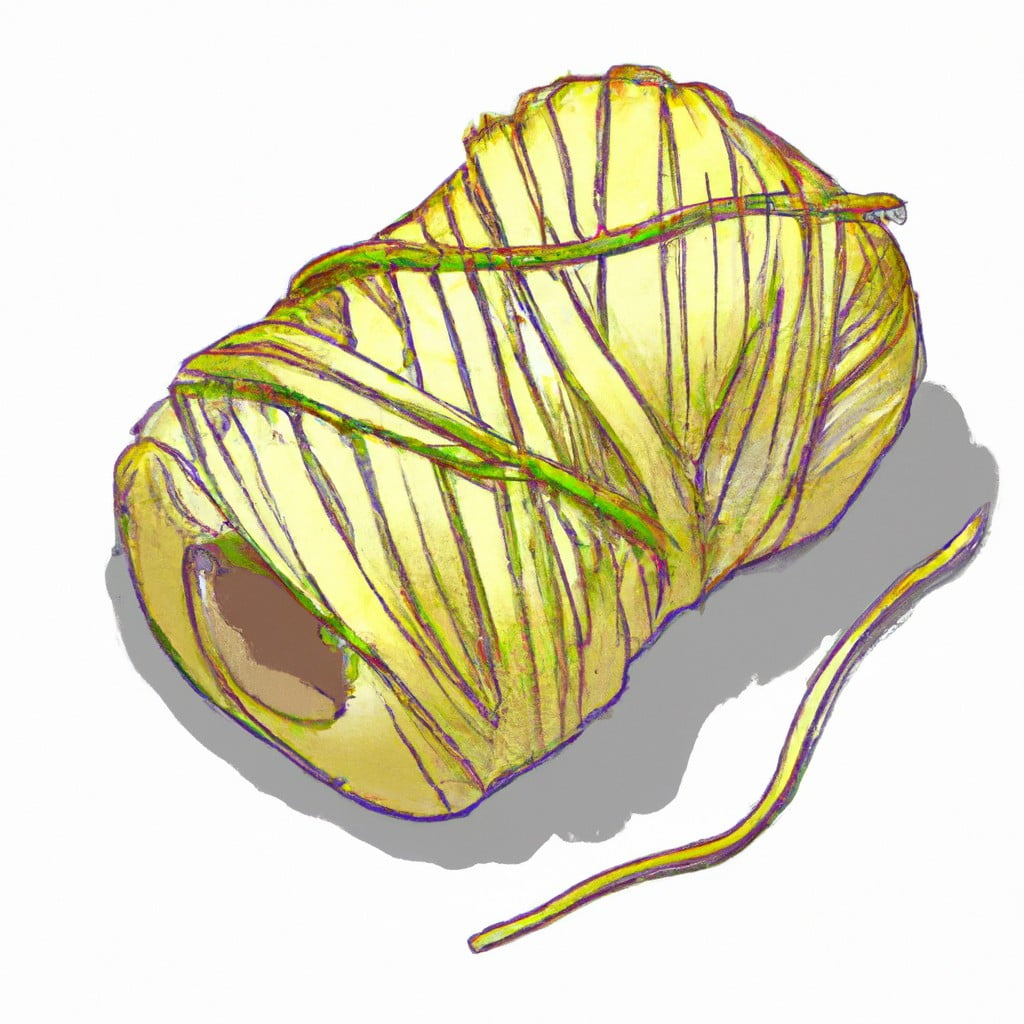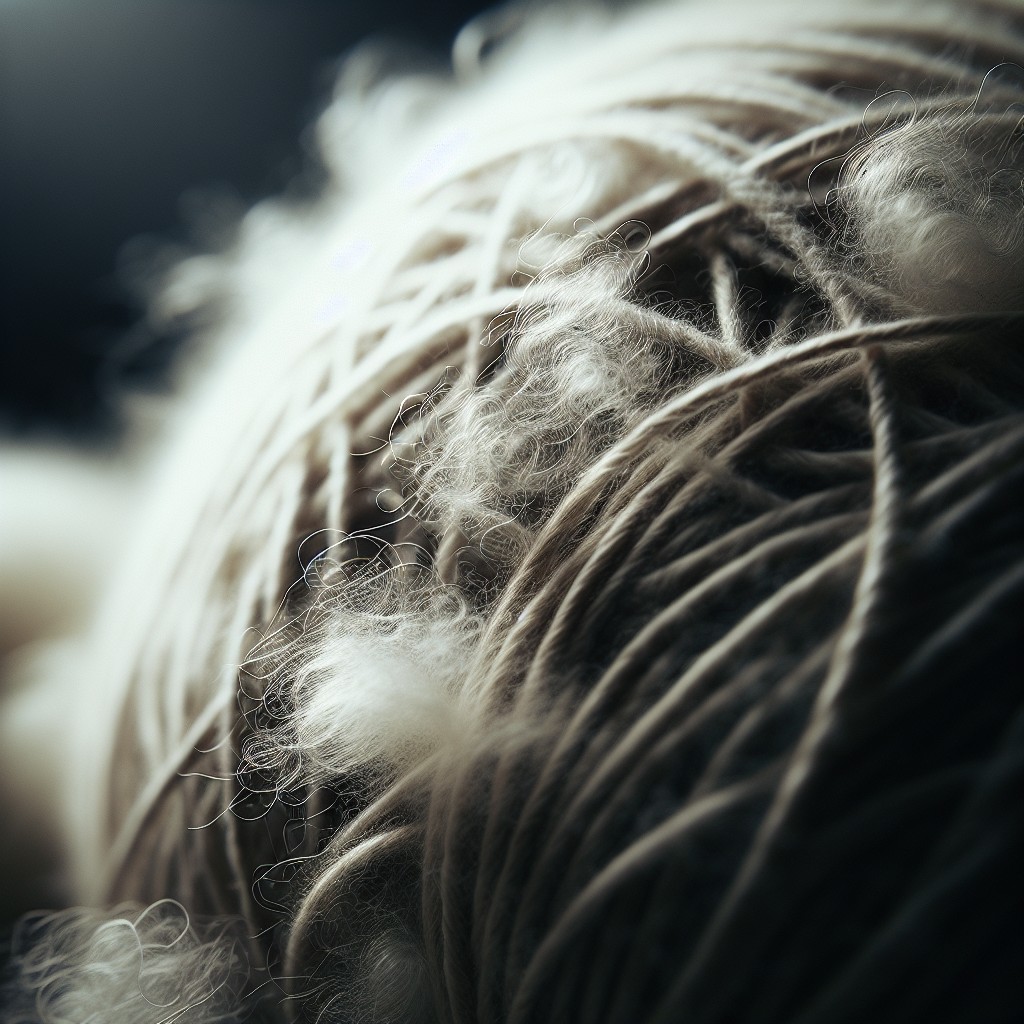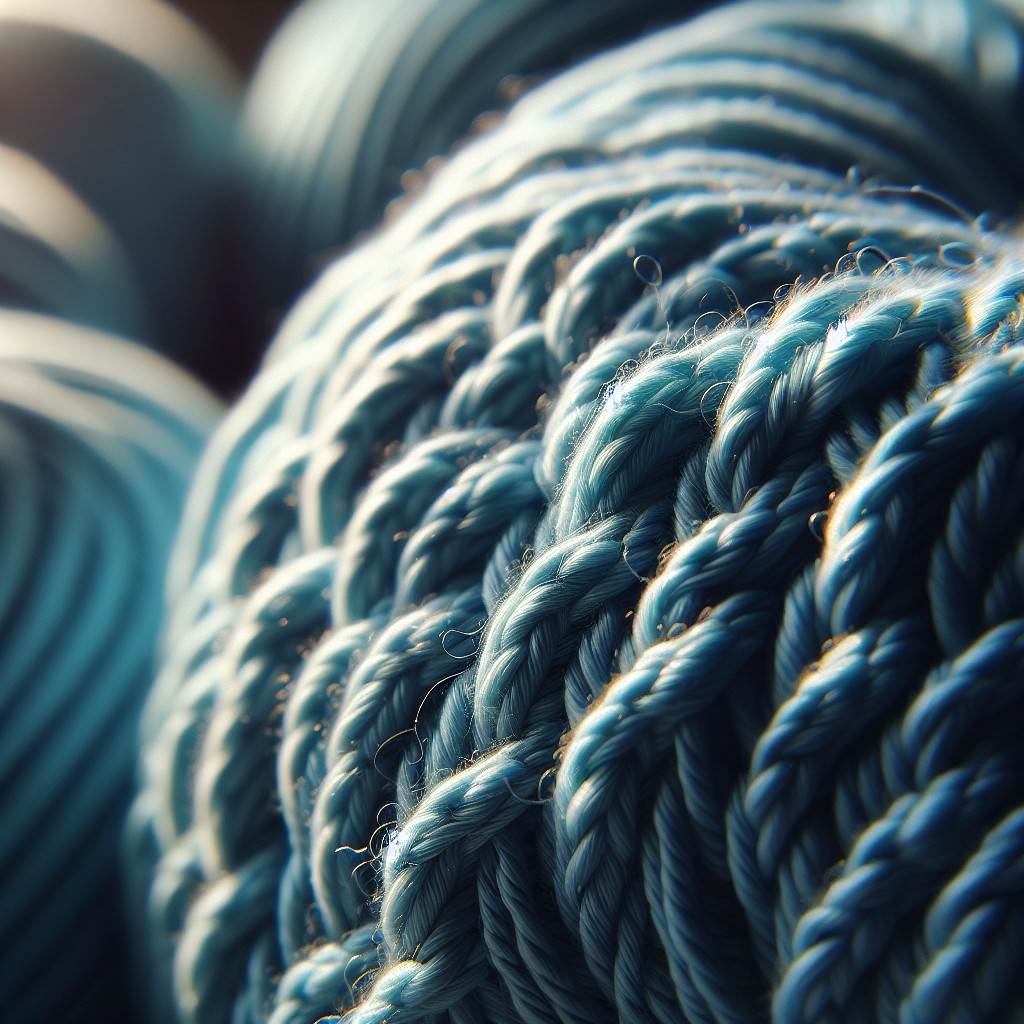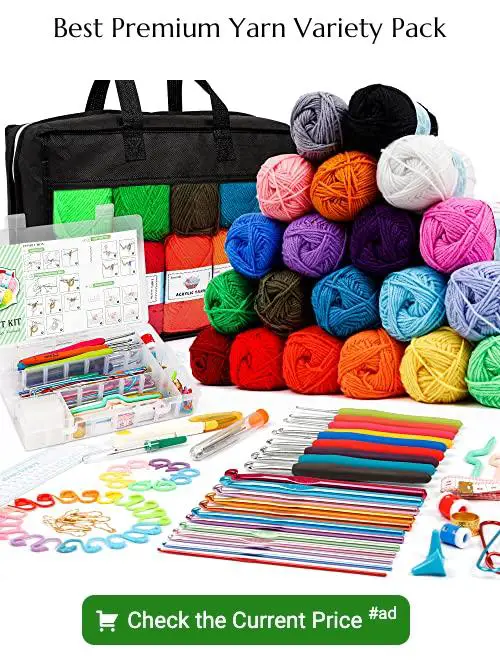Discover the fascinating world of yarn textures as we explore a variety of types to elevate your knitting and crochet projects.
Yarn is the backbone of any knitting or crocheting project. It comes in a variety of textures, each with its own unique qualities and characteristics.
Choosing the right yarn texture can make all the difference in the outcome of your project. From soft and fluffy to smooth and silky, there’s a yarn texture out there for everyone.
In this blog post, we’ll explore some of the most popular types of yarn textures and what makes them stand out. Whether you’re a seasoned crafter or just starting out, this guide will help you understand which yarn textures are best suited for your next project.
So grab your needles or hook and let’s dive into the wonderful world of yarn!
Smooth Yarn

Smooth yarn is a popular choice for many knitting and crochet projects. It’s soft, silky, and glides easily through your fingers as you work.
Smooth yarns are typically made from fibers like cotton or silk that have been spun tightly together to create a smooth surface with little texture.
One of the benefits of using smooth yarn is that it creates a clean, polished look in your finished project. This makes it an excellent choice for items like blankets or scarves where you want the focus to be on the overall design rather than individual stitches.
Another advantage of working with smooth yarn is its versatility. Because it has little texture, it can be used in a wide range of stitch patterns without detracting from their beauty.
Fuzzy Yarn

These yarns have a soft, fluffy texture that adds depth and dimension to any project. Fuzzy yarn is made by spinning together fibers of different lengths, creating an uneven surface that catches the light in interesting ways.
One of the benefits of using fuzzy yarn is its ability to hide imperfections in your work. If you’re new to knitting or crocheting, fuzzy yarn can be forgiving when it comes to mistakes or uneven stitches.
There are several types of fuzzy yarn available on the market today, including mohair and angora blends. Mohair has long been prized for its softness and durability while Angora wool provides warmth without adding bulkiness.
When working with fuzzy yarns it’s important not to use small needles as they will only make your project look too tight which will ruin the overall effect you want from this type of textured fiber.
Chainette Yarn

It’s made up of several small fibers twisted together to form a chain-like structure, which gives it its distinctive texture. This type of yarn is often used for lightweight garments and accessories because it creates an airy fabric with excellent drape.
One advantage of using chainette yarn in your projects is that it doesn’t split easily, making it easier to work with than some other types of textured or novelty yarns. The tubular construction allows air to circulate through the fibers more easily, keeping you cool and comfortable even on warm days.
When choosing chainette yarn for your project, keep in mind that this type tends to be less elastic than other types like plied or single-ply varieties. However, if you’re looking for something soft and lightweight with great drape properties then this might just be the perfect choice!
Single Ply Yarn

It’s often used for lightweight projects like shawls, scarves, and hats. Single ply yarns are known for their softness and drape, making them perfect for creating delicate garments with a beautiful flow.
One thing to keep in mind when working with single ply yarns is that they can be more prone to pilling than other types of yarn due to the lack of twist in the fibers. However, this can also add character and texture to your finished project.
When choosing a single ply yarn, look for ones made from high-quality fibers such as merino wool or alpaca as these will provide both softness and durability. Single ply cotton or linen blends are also great options if you’re looking for something lighter weight.
Single ply yarns offer unique qualities that make them stand out from other types of textured yams on the market today.
Ply Yarns

The number of plies in a yarn affects its texture, strength, and drape. A single-ply yarn is softer and fluffier than a multi-ply one but may not be as strong.
On the other hand, multi-ply yarns tend to be stronger and more durable but can also feel stiffer.
When choosing ply count for your project consider what you want the finished product to look like; do you want it to have a smooth finish or textured? Do you need it to hold up well over time? These factors will help determine which ply count is best suited for your project.
Some popular examples of ply counts include 2-ply (also known as double knitting), 3-ply (often used in sock knitting), and 4-plies (common in worsted weight). Experimenting with different ply counts can add depth and dimensionality to your projects while also providing unique textures that stand out from traditional single-strand options.
Cord Yarns
This type of yarn is perfect for projects that require durability and strength, such as bags or rugs. Cord yarns come in a variety of thicknesses and can be made from different materials like cotton, wool, acrylic or nylon.
One popular cord yarn is the twisted cord which consists of multiple strands twisted together to create a strong yet flexible rope-like texture. Twisted cords are often used for drawstrings on bags and hoodies.
Another type of cord yarn is the braided cord which involves interlacing three or more strands to create an even stronger structure than twisted cords. Braided cords are commonly used in home decor items like curtain ties backs and tassels.
Novelty Yarns
These yarns come in a variety of textures, colors, and shapes that can make any project stand out. Some popular types of novelty yarn include eyelash yarn, ribbon yarn, boucle yarn, and chenille yarn.
Eyelash Yarn is made up of small strands that resemble eyelashes. It’s perfect for adding texture to scarves or shawls.
Ribbon Yarn is flat like ribbon with varying widths which makes it great for creating unique accessories such as belts or headbands.
Boucle Yarn has loops along the strand giving it an interesting texture when knitted up into garments such as sweaters or hats.
Chenille Yarn has a velvety feel making it ideal for soft blankets and plush toys.
Textured Yarns
These types of yarns can be achieved by any number of methods, including twisting, looping, or knotting the fibers together. Some textured yarns feature small bumps or nubs that create a unique tactile experience when worked up into fabric.
Others may have longer loops or tufts that add an element of whimsy to your project.
One thing to keep in mind when working with textured yarns is their impact on stitch definition. Because these types of yarn tend to be more irregular than smooth varieties, they can obscure intricate stitch patterns and details in your work.
However, this doesn’t mean you should avoid using them altogether! Textured yarns are perfect for creating cozy blankets and scarves where warmth is the main priority over intricate design.
Stretch Yarns
This type of yarn is made with elastic fibers like spandex or Lycra, which gives it its unique properties. Stretchy yarns are great for projects that require a snug fit such as socks, gloves or hats.
They also work well in garments where you want to add some extra comfort and flexibility. One thing to keep in mind when working with stretchy yarns is their tendency to curl up on themselves while being worked on due to the elasticity of the fibers used in making them.
To avoid this issue, try using larger needles than what’s recommended on your pattern label; this will help prevent curling while still maintaining an even tension throughout your project. If you’re looking for a versatile and comfortable option for your next knitting or crocheting project – consider giving stretchy yarns a try!
Metallic Yarns
These yarns are made by wrapping a thin strip of metal around a core fiber, creating an eye-catching shimmer effect. Metallic yarn can be used on its own or combined with other types of yarn for added texture and dimension.
One thing to keep in mind when working with metallic yarn is that it can be more difficult to work with than traditional fibers due to its stiffness. It’s important not to pull too tightly when knitting or crocheting as this can cause the metal thread inside the fiber wrap from breaking.
Despite their challenges, metallic yarns offer endless possibilities for adding some pizzazz into your projects.
What Is Yarn Texture and Why Does It Matter?
It is determined by factors such as the thickness, ply count, fiber content, and spinning method used in its production. The texture of a yarn can greatly impact how it looks and feels when knitted or crocheted into a project.
For example, smooth yarns are great for creating clean lines and crisp stitches while fuzzy or textured yarns add depth and dimension to your work. Understanding different types of textures can help you choose the right one for your project.
Texture also affects how easy it is to work with certain types of projects. For instance, slippery metallic or stretchy novelty yarn may be more difficult to handle than traditional wool blends.
How Ply Count Affects Yarn Texture
The ply count affects the texture, strength, and drape of the yarn. Single-ply yarns have a smooth texture and tend to be weaker than multi-ply yarns because they lack structural integrity.
Multi-ply yarns can range from two plies up to eight or more, with each additional ply adding more structure and strength.
The number of plies also affects how light or heavy a particular type of yarn feels in your hands as you work with it. A single strand may feel delicate while multiple strands will give you something thicker that is easier for beginners who need some extra help keeping their stitches even.
Yarn Texture Vs. Textured Yarns
However, they actually refer to two different things. Yarn texture refers to the physical feel of the yarn itself – is it smooth or fuzzy? Thick or thin? On the other hand, textured yarns refer to any type of specialty or novelty yarn that has a unique surface design such as loops, bumps, curls and twists.
While all textured yarns have a distinct texture due to their unique designs and construction methods (such as boucle), not all types of traditional smooth or plied-yarn have an obvious tactile quality. Understanding these differences can help you choose which type of material will work best for your project.
Yarn Textures and Why They Matter
The texture of yarn refers to its physical feel and appearance, which can range from smooth and silky to fuzzy and fluffy. Different types of yarn textures are suitable for different projects, depending on the desired look, drape, warmth level, stitch definition required for that particular pattern.
For example: Smooth yarns like silk or cotton are perfect for creating lightweight garments with excellent stitch definition while Fuzzy Yarns like mohair add a soft halo effect that gives an ethereal quality to any garment.
Understanding how different types of yarn textures behave is essential when selecting materials for your next project. It’s important not only to consider what you want the finished product to look like but also how it will feel against your skin if it’s wearable item such as scarves or sweaters.
Classification Based On Number of Strands
Single yarns, as the name suggests, are made up of a single strand and tend to be smoother and more delicate in texture. Ply yarns, on the other hand, consist of two or more strands twisted together which makes them stronger and sturdier than single ply yarn.
When choosing between these two types of yarn textures for your project it’s important to consider what you’re making. If you’re creating something that requires durability such as a sweater or blanket then ply yarn may be your best bet due to its strength.
However if you want something with a softer feel like scarves or shawls then single ply may work better.
Single Yarns
They can be either smooth or textured, depending on the type and length of fiber used. Single ply yarns tend to be softer and more delicate than plied yarns, making them ideal for lightweight garments such as shawls or scarves.
However, because they have only one strand holding them together, single ply yarns can also be more prone to pilling and breaking than plied yarns. It’s important to choose the right type of fiber for your project when working with single ply yarn so that it will hold up over time.
Some popular types of single ply fibers include merino wool, alpaca wool, silk blends and cotton blends. These fibers create soft textures that drape beautifully in finished projects like blankets or sweaters.
Types of Textured Yarns and Its Usage
They come in a variety of styles, from boucle to chenille, each with its own unique texture. Boucle yarn is made up of loops that create an interesting bumpy texture when knitted or crocheted.
Chenille yarn has a soft velvety feel due to the short pile fibers used in its construction.
Another type of textured yarn is ribbon or tape yarn which creates flat strips when knitted or crocheted together giving it an almost woven appearance. Slub Yarn has thick and thin sections throughout the strand creating irregularities along the length.
These types of textured yarns can be used for various projects such as scarves, shawls, blankets, hats etc., where you want your project to have more depth than just plain stockinette stitch fabric would provide.
When choosing textured yarncraft materials consider what kind of effect you want your finished product will have on people who see it – do they need something cozy? Something elegant? Or maybe something playful?.
Textured Yarns Can Be Achieved By Any of the Following Methods
Plying: This is the process of twisting two or more strands of yarn together to create a thicker, stronger, and more textured yarn.
2. Boucle: A boucle texture is created by adding loops to a strand of yarn at regular intervals.
The result is a bumpy, curly texture that adds interest and dimension to your project.
3. Slub: Slub textures are created by intentionally adding thick spots or bumps in the strand while spinning it into yarn.
4. Chenille: Chenille textures are made up of short lengths of fiber twisted together on their own axis creating softness with an almost velvety feel.
5. Tweed Yarns – These types have small flecks spun throughout them which give them an interesting look when knitted up.
Each method produces unique results that can add depth and character to your projects depending on what you’re looking for in terms appearance as well as functionality. Understanding these different methods will help you choose the right type(s) for your next project based on its intended use such as warmth vs aesthetics etc.
FAQ
What are the 3 major yarn categories?
The 3 major yarn categories are Animal Fibers, Plant Fibers, and Synthetic Fibers.
What are the categories of yarn?
Answer: The categories of yarn (0-7) are lace, super fine, fine, light, medium, bulky, super bulky, and jumbo.
What is texturizing yarn?
Texturizing yarn refers to the process of modifying synthetic fibers to alter their texture through techniques such as bulking, crimping, and coiling, which ultimately change the fiber’s physical appearance.
What are the differences between natural and synthetic yarns?
Natural yarns are made from animal or plant fibers, while synthetic yarns are produced from man-made materials, with the former being more eco-friendly, breathable, and biodegradable and the latter being more durable, affordable, and customizable.
How do various yarn textures affect the outcome of a knitting or crocheting project?
Various yarn textures impact the outcome of a knitting or crocheting project by altering the appearance, feel, and drape of the final product, along with affecting stitch definition and overall ease of working with the material.
What factors determine the softness and durability of different yarn types?</strong>
Answer: The softness and durability of different yarn types are determined by factors such as fiber content, yarn structure, and processing techniques.





